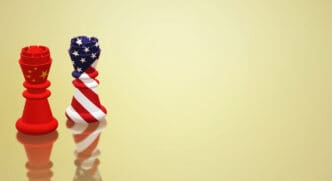Executive Summary
The Story So Far
Why This Matters
Who Thinks What?
Beijing has issued a seven-point rebuttal to U.S. demands that China ease its rare earth export controls, escalating a war of words between the two global economic powers. The Chinese state media’s response comes after U.S. Trade Representative Jamieson Greer accused China of a “global supply-chain power grab” and suggested that rescinding the new controls, set to take effect on November 8, could avert President Donald Trump’s threat of triple-digit tariffs on Chinese goods.
U.S. Accusations and China’s Defense
Washington views China’s new critical minerals restrictions as a “shocking” move, according to President Trump. U.S. Trade Representative Greer linked the rare earth controls to potential tariff increases, suggesting a direct trade-off for de-escalation.
China, however, maintains that it informed Washington prior to announcing the new licensing regime. Beijing argues that its export controls are consistent with international practices and similar measures long adopted by other major economies, including the United States.
Escalating Tensions
The current friction follows a September telephone call between President Trump and Chinese leader Xi Jinping, after which both sides accused each other of stoking tensions. This escalation occurs weeks before an anticipated meeting between the two leaders.
Beijing attributes the heightened rhetoric to the U.S. Commerce Department’s late-September expansion of its “Entity List.” This expansion included companies in China and elsewhere suspected of using subsidiaries to circumvent export restrictions on chipmaking equipment and other high-tech goods.
Comparative Controls and “Tit-for-Tat”
An infographic published by the People’s Daily, the official newspaper of the Communist Party, stated that “The United States has long overstated national security concerns and abused controls, adopting discriminatory practices against China.” It highlighted that Washington’s control list spans over 3,000 items, significantly more than Beijing’s catalogue of 900.
The editorial in the Global Times, a state-owned tabloid, commented on the situation, saying, “Washington should not be surprised by China’s ‘tit-for-tat’.” It suggested that the “sudden shift in the trade atmosphere” was triggered by “Washington’s breach of promises,” describing it as an “all-too familiar pattern.”
Key Takeaways
The ongoing dispute over rare earth export controls highlights deep-seated tensions in U.S.-China trade relations. Both nations accuse each other of protectionist measures and escalating rhetoric, with China defending its controls as consistent with international norms while the U.S. views them as a strategic power grab.








